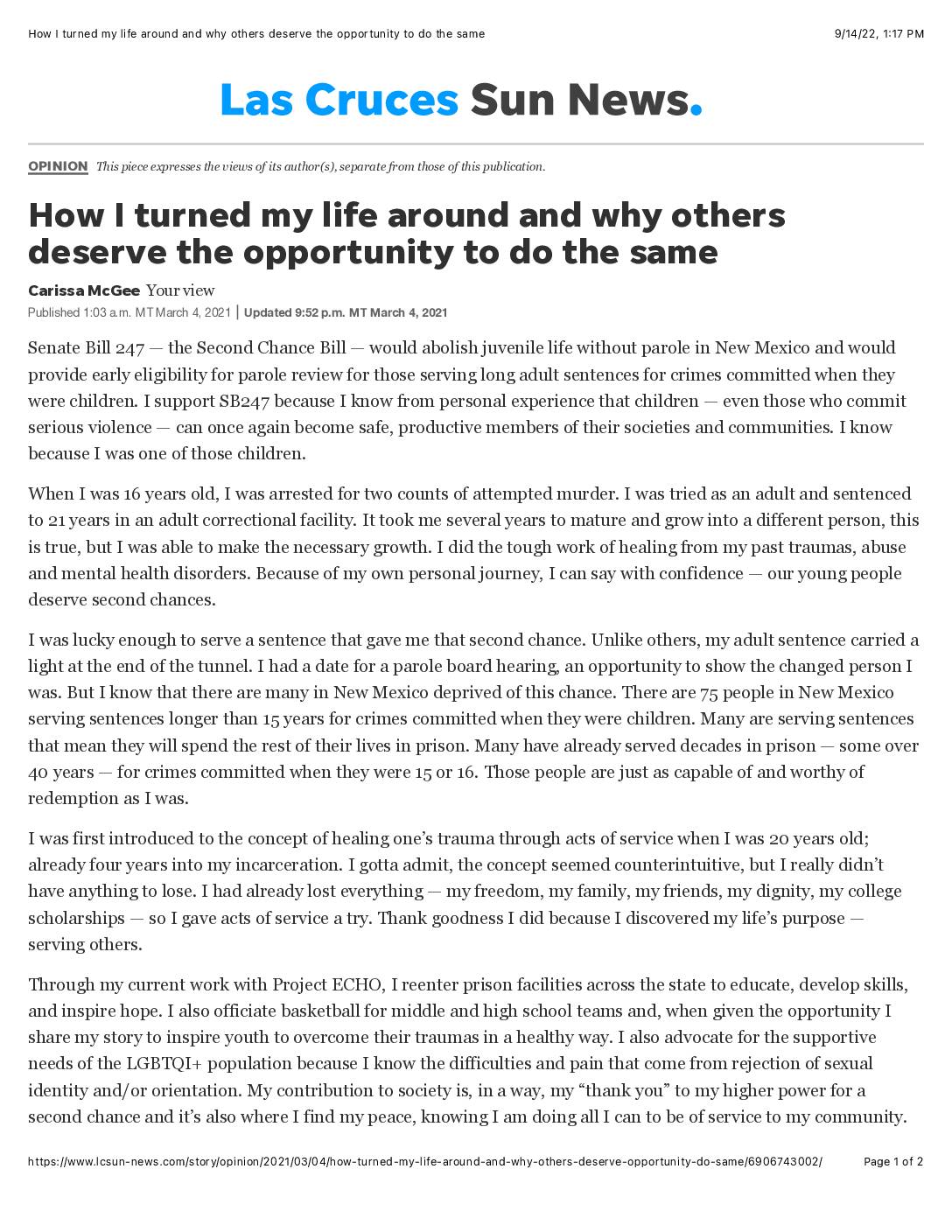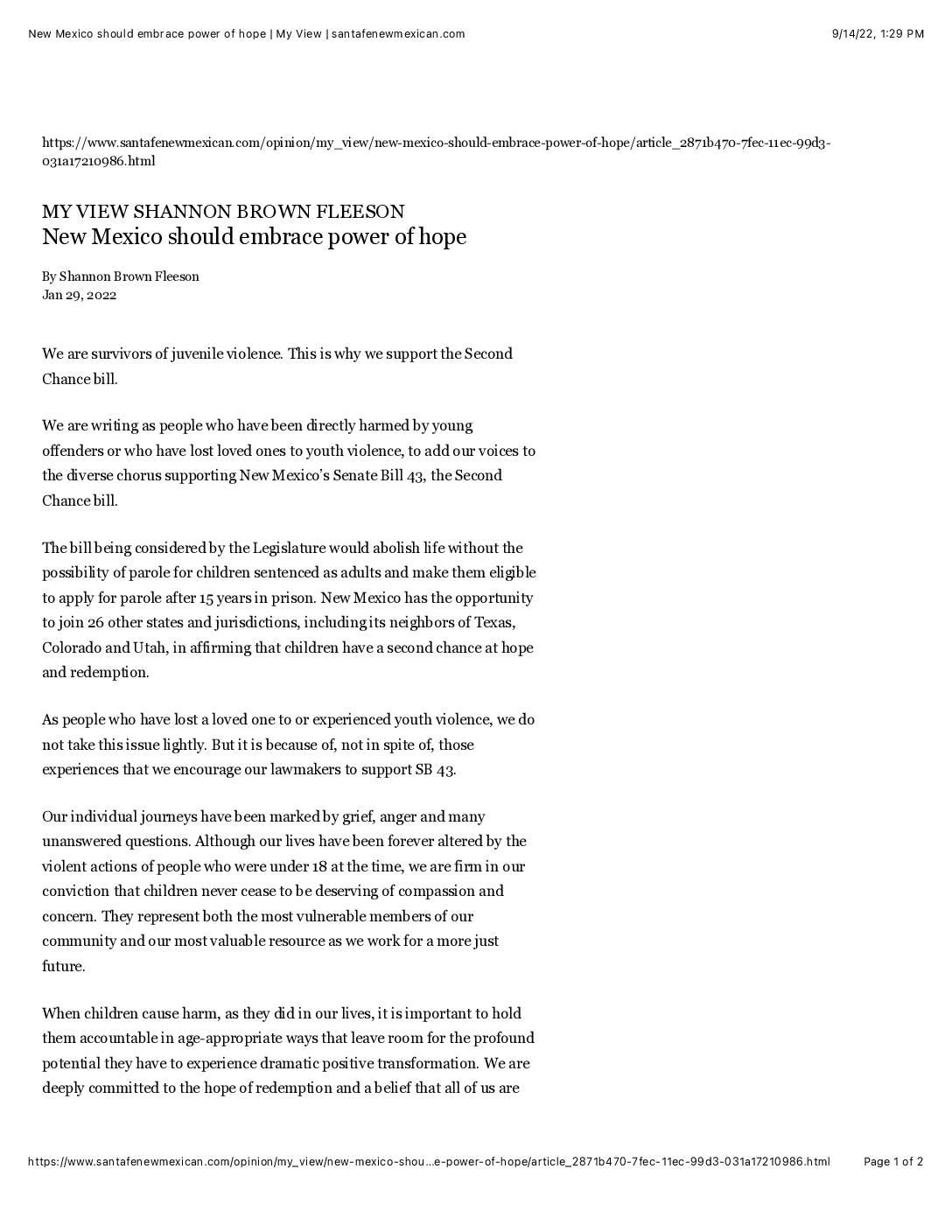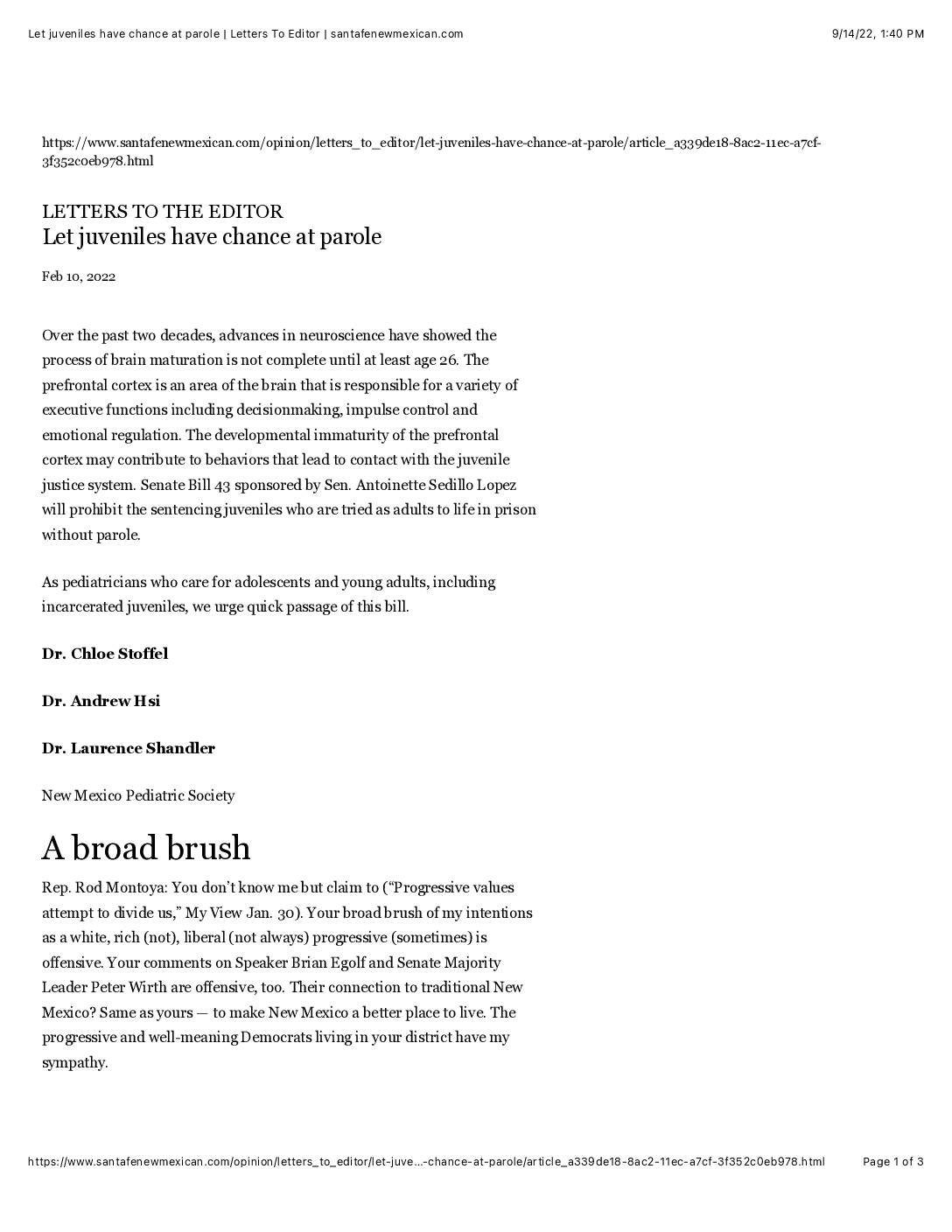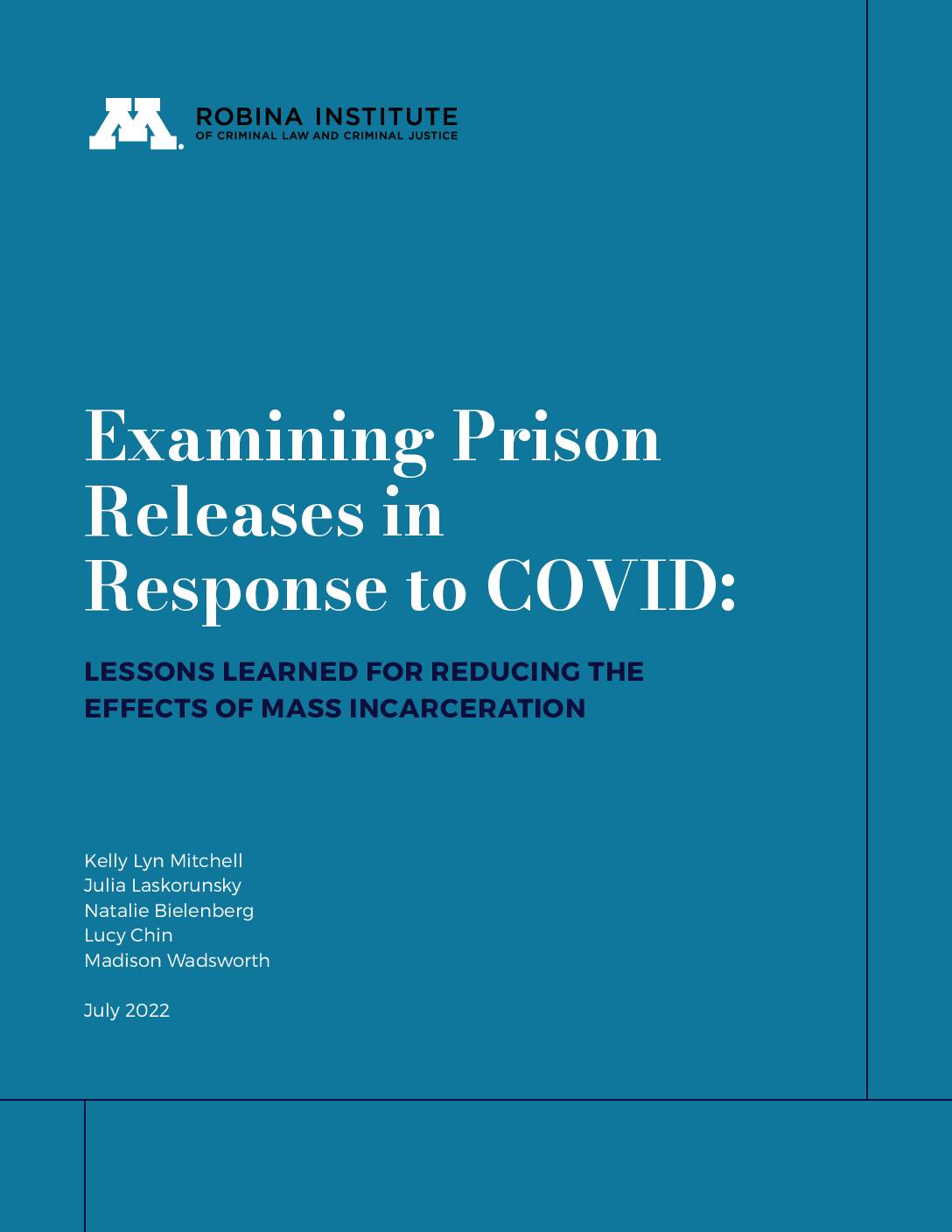PDF How I turned my life around and why others deserve the opportunity to do the same
This is an op-ed in support of Senate Bill 247 which would ban juvenile life without parole in New Mexico and create early parole for those serving long adult sentences for crimes committed as children. The article was written by Carissa McGee who details her experience of being tried as an adult and sentenced to 21 years when she was 16.











